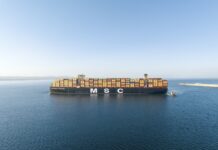
The Shanghai Containerised Freight Index (SCFI) steadied and posted a 0.1% w-o-w decline, while China Containerized Freight Index (CCFI) was up 0.3% and World Container Index (WCI) was up 1%.
The rally in freight rates since late April appears short-lived as demand has not yet materially picked up. However, consumption has been resilient, lending hope for a potential restocking-led demand recovery in the second half of the year.
Transpacific carriers have announced a General Rate Increase (GRI) effective from 15 May and 1 June 2023, which we believe might not be successfully implemented as overcapacity woes remain. While contract rates could still be renewed at above-spot levels, we highlight that aggressive cost controls through slow steaming and network optimisation will be crucial to maintain profitability.
On 4 May, Panamax, usually carrying coal or grains, has declined 21% in the past month, likely weighed down by the pace of grain shipments out of Ukraine which has slowed on fears of vessels getting stuck if the Black Sea grain deal is not renewed in the coming week.
On the other hand, Capesize gained 25% m-o-m, likely supported by iron ore exports from Brazil and Australia despite China’s official manufacturing PMI unexpectedly declining to 49.2 in April from 51.9 in March, falling below the 50-point mark.
Reuters estimated China imported 10.67 mpbd of crude in April, dropping from the 34-month high of 12.37 mbpd in March, likely because April and May are peak seasons for refinery maintenance.
While the Russia-Ukraine war, OPEC+ cut, elevated inflation, falling refinery margins and high interest rate could curtail near-term expectations, we believe oil demand is still robust in the near term given China’s robust demand for imports, boding well for VLCC earnings.
A decade-low vessel orderbook, tightening environmental regulations and lengthened trade routes all pave a way for sustainably higher tanker freight rates despite rising volatility.
The Baltic Air Freight Index has dropped 36% y-o-y or 13% q-o-q in 2Q23-to-date. We see the trend of normalisation in air cargo rates as well, given the continuous return of passenger belly capacity following China’s reopening and modal shift back to ocean shipping following shipping rates’ normalization.
The article was written by Parash Jain, Head of Shipping & Ports & Asia Transport Research at HSBC





